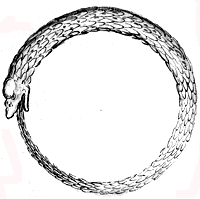In Geert Lovink's new book (mentioned in yesterday's post) there is an interesting almost-manifesto about network aesthetics that he wrote with Anna Munster for Fibreculture in 2005. Reminding me of Tom Moody's complaints about what he calls, "XYZ art," Munster and Lovink take on the proliferation of network mapping projects and call for more nuanced expressions of network culture that aren't reduced to pictures of nodes and lines. Some bits:
The very notion of a network is in conflict with the desire to gain an overview.
Mapping information – the aesthetics of contemporary visualisation – provides a sense of relief that the twisted and unstructured info-bits that roam around in our cognitive unconscious are finally laid-out to rest. A beast is tamed.
We should forget about exposing the links that are already there, and, with our capacity to engage a networked logic, forge links to what is in the network but not yet of the network. By this we mean to invoke a project more akin to social aesthetics or aesthesia in which we engage in and with the collective experiences of being embroiled in networks and being actively part of their making. This we can contrast with the abstracted activity of simply mapping quantities of data – such as social network maps – a form of production already captured by the codes and conventions of connectivity.

This image above (1998) is the "final map showing 2.5 years of accumulated statistics" from John F. Simon, Jr.'s finished net.art project Alter Stats. Below is a recent image (2007) by Chris Harrison, "a Ph.D. student in the Human-Computer Interaction Institute at Carnegie Mellon University."

In the early days of net art, technical expertise was political in the hands of artists who used their skills to claim the technology and make it transparent, thereby resisting corporate attempts to perpetuate the seamless illusions of television online. But as the internet morphed from a medium to a ubiquitous environment, the urgency with which net artists revealed technology shifted from an activist practice to an ideological, formalist aesthetic.

There's lots of grey area, like Ken Goldberg's famous Telegarden (1995-2004), above. In this work, internet users tend a garden from remote locations by interacting with a website that sends commands to a robot in the gallery that waters the plants. This work differs from a network map in that it does not literally represent nodes and lines of connection. But its literal manifestation of a network is vulnerable to Lovink and Munster’s critique that “the increasingly abstract topological visualization of networks removes us from an analysis of the ways in which networks engage and are engaged by current political, economic, and social relations.”
In 1995, the garden itself was staged as if it were a meaningful object, cared for collaboratively by a network of internet users. But in the present day context, the fragile little circle of plants functions as an instrument for the system, revealing nothing more than its own site as node in the network. When the self-reflexivity of the gallery artworld melds with the self-reflexivity of network mapping, we end up with a techno-art snake eating its own tail.
 
|
In Geert Lovink's new book (mentioned in yesterday's post) there is an interesting almost-manifesto about network aesthetics that he wrote with Anna Munster for Fibreculture in 2005. Reminding me of Tom Moody's complaints about what he calls, "XYZ art," Munster and Lovink take on the proliferation of network mapping projects and call for more nuanced expressions of network culture that aren't reduced to pictures of nodes and lines. Some bits:
This image above (1998) is the "final map showing 2.5 years of accumulated statistics" from John F. Simon, Jr.'s finished net.art project Alter Stats. Below is a recent image (2007) by Chris Harrison, "a Ph.D. student in the Human-Computer Interaction Institute at Carnegie Mellon University."
In the early days of net art, technical expertise was political in the hands of artists who used their skills to claim the technology and make it transparent, thereby resisting corporate attempts to perpetuate the seamless illusions of television online. But as the internet morphed from a medium to a ubiquitous environment, the urgency with which net artists revealed technology shifted from an activist practice to an ideological, formalist aesthetic.
There's lots of grey area, like Ken Goldberg's famous Telegarden (1995-2004), above. In this work, internet users tend a garden from remote locations by interacting with a website that sends commands to a robot in the gallery that waters the plants. This work differs from a network map in that it does not literally represent nodes and lines of connection. But its literal manifestation of a network is vulnerable to Lovink and Munster’s critique that “the increasingly abstract topological visualization of networks removes us from an analysis of the ways in which networks engage and are engaged by current political, economic, and social relations.” In 1995, the garden itself was staged as if it were a meaningful object, cared for collaboratively by a network of internet users. But in the present day context, the fragile little circle of plants functions as an instrument for the system, revealing nothing more than its own site as node in the network. When the self-reflexivity of the gallery artworld melds with the self-reflexivity of network mapping, we end up with a techno-art snake eating its own tail.
- sally mckay 12-09-2008 12:57 am